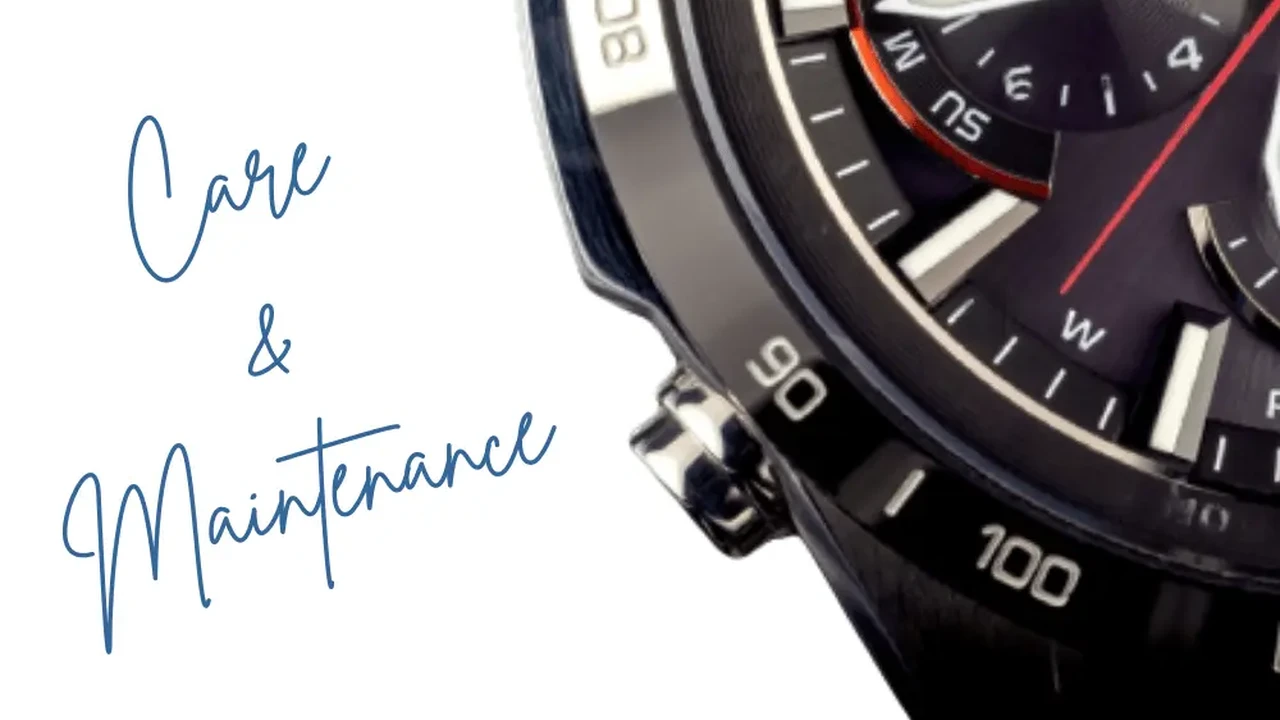The Future of Smartwatches: What to Expect in 2025
The smartwatch industry is booming, with constant innovation promising even more exciting advancements in the near future. This article delves into the potential future of smartwatches in 2025, exploring expected technological breakthroughs, popular use cases, and specific product recommendations. We'll also compare different models and discuss their pricing, giving you a comprehensive look at what to expect from the world of smartwatches.

Smartwatch Technology Advancements in 2025
Alright, let's dive right into what's cooking in the smartwatch world for 2025. We're talking serious upgrades here. Think beyond just telling time and counting steps. We're looking at tech that's more integrated with our lives than ever before. One of the biggest advancements we'll likely see is in sensor technology. Currently, smartwatches can track heart rate, sleep patterns, and even blood oxygen levels. By 2025, expect even more sophisticated sensors capable of monitoring things like blood glucose levels (non-invasively!), stress levels in real-time, and even early detection of potential health issues. This could be a game-changer for preventative healthcare, giving users valuable insights into their well-being and alerting them to potential problems before they become serious. Imagine your smartwatch giving you a heads-up about a developing infection based on subtle changes in your body temperature and heart rate variability – that's the kind of future we're talking about.
Beyond health sensors, we'll also see improvements in battery life. Nobody wants a smartwatch that needs charging every few hours. Manufacturers are working hard on more efficient processors and battery technologies that will allow smartwatches to last for days, even with heavy use. Think weeks rather than hours! This will make them much more practical for everyday use, especially for activities like hiking and camping where access to charging outlets might be limited.
Display technology is also evolving rapidly. Expect to see brighter, more vibrant displays that are easier to read in direct sunlight. MicroLED technology, which offers superior contrast and energy efficiency compared to traditional OLED displays, is likely to become more common. We might even see foldable or rollable displays that allow smartwatches to transform into larger screens when needed, providing a more immersive viewing experience for things like watching videos or browsing the web.
Finally, connectivity will be even more seamless. Smartwatches will be able to connect to a wider range of devices and services, making them even more versatile and useful. Think about controlling your smart home devices, making payments, and even accessing augmented reality experiences directly from your wrist. The possibilities are endless!
Smartwatch Use Cases and Applications in 2025
So, what will we actually *do* with all this fancy new smartwatch technology? Well, the use cases are expanding beyond fitness tracking and notifications. Let's break it down:
- Healthcare: As mentioned earlier, smartwatches will play a crucial role in preventative healthcare. They'll be able to monitor vital signs, detect potential health issues, and even provide personalized recommendations for improving health and well-being. Imagine your smartwatch reminding you to take a break and do some stretching if it detects that you've been sitting for too long, or suggesting a healthy snack based on your current blood glucose levels.
- Fitness: Fitness tracking will become even more sophisticated. Smartwatches will be able to track a wider range of activities, from swimming and cycling to rock climbing and yoga. They'll also provide more detailed insights into performance, helping users to optimize their training and achieve their fitness goals. Expect to see features like real-time form analysis for exercises, personalized training plans based on individual fitness levels, and even virtual coaching that provides guidance and motivation during workouts.
- Communication: Smartwatches will become even more powerful communication devices. They'll be able to make and receive calls, send and receive messages, and even participate in video conferences. Improved voice recognition and AI-powered assistants will make it easier to interact with smartwatches using voice commands, allowing users to stay connected without having to constantly look at their phones.
- Productivity: Smartwatches will also become valuable productivity tools. They'll be able to manage calendars, set reminders, and even handle simple tasks like sending emails and making payments. Integration with productivity apps like Microsoft Office and Google Workspace will allow users to stay on top of their work even when they're on the go.
- Entertainment: Smartwatches will offer a wider range of entertainment options. They'll be able to stream music, play games, and even watch videos. Improved display technology and audio quality will make the entertainment experience more immersive. Imagine being able to listen to your favorite podcast while you're running, or watching a quick video clip while you're waiting in line.
- Navigation: Smartwatches will provide more accurate and reliable navigation. They'll be able to provide turn-by-turn directions, even in areas with poor GPS coverage. Augmented reality navigation will overlay directions onto the real world, making it even easier to find your way around. Imagine being able to hold up your wrist and see arrows pointing you in the right direction, guiding you through unfamiliar streets.
Smartwatch Product Recommendations and Comparisons 2025
Okay, let's get down to brass tacks. What smartwatches should you be looking at in 2025? While it's impossible to predict the exact models that will be available, we can make some educated guesses based on current trends and technological advancements. Here are a few potential contenders:
- The "HealthGuard" Smartwatch: This hypothetical smartwatch focuses heavily on health monitoring. Imagine a sleek, minimalist design packed with advanced sensors. It would feature continuous glucose monitoring, stress level tracking, and even early detection of potential heart problems. The interface would be simple and intuitive, making it easy for users of all ages to understand their health data. Use Case: Ideal for individuals who are proactive about their health and want to monitor their vital signs closely. Price Range: $500 - $700.
- The "AdventurePro" Smartwatch: This rugged smartwatch is designed for outdoor enthusiasts. It would be waterproof, shockproof, and dustproof, and it would feature a long-lasting battery that can withstand even the most demanding adventures. It would also include built-in GPS, a compass, and a barometer, making it an essential tool for hikers, campers, and climbers. Use Case: Perfect for outdoor adventures, offering durability and essential navigation tools. Price Range: $400 - $600.
- The "ConnectMax" Smartwatch: This smartwatch is all about connectivity. It would feature seamless integration with smartphones, smart home devices, and other connected devices. It would also offer advanced communication features, such as video conferencing and augmented reality calling. Use Case: Geared towards professionals who need to stay connected and productive on the go. Price Range: $600 - $800.
- The "StyleTech" Smartwatch: This smartwatch blends fashion and technology. It would feature a sleek, stylish design and a customizable interface. It would also offer a range of smart features, such as fitness tracking, notifications, and mobile payments. Use Case: Appeals to fashion-conscious users who want a smartwatch that looks as good as it performs. Price Range: $300 - $500.
Comparing the Options: The *HealthGuard* prioritizes health features, making it ideal for health-conscious users. The *AdventurePro* is built for durability and outdoor use. The *ConnectMax* focuses on connectivity and productivity. The *StyleTech* balances style and functionality. The best choice depends on individual needs and priorities.
Smartwatch Pricing and Affordability in 2025
Let's talk money. How much will these futuristic smartwatches cost? While prices will vary depending on the brand, features, and materials used, we can expect a range of options to be available. Entry-level smartwatches with basic features will likely be available for around $200 - $300. Mid-range smartwatches with more advanced features will cost around $400 - $600. And premium smartwatches with cutting-edge technology and luxury materials could easily exceed $800 or even $1000.
One factor that will influence pricing is the cost of components. Advanced sensors, high-resolution displays, and long-lasting batteries all add to the cost of manufacturing. However, as technology advances and production scales up, we can expect prices to gradually come down over time. Another factor that will influence pricing is competition. As more and more companies enter the smartwatch market, we can expect to see more aggressive pricing strategies and promotional offers.
Ultimately, the affordability of smartwatches will depend on individual budgets and priorities. However, with a wide range of options available at different price points, there will be a smartwatch to suit almost everyone.
:max_bytes(150000):strip_icc()/277019-baked-pork-chops-with-cream-of-mushroom-soup-DDMFS-beauty-4x3-BG-7505-5762b731cf30447d9cbbbbbf387beafa.jpg)






